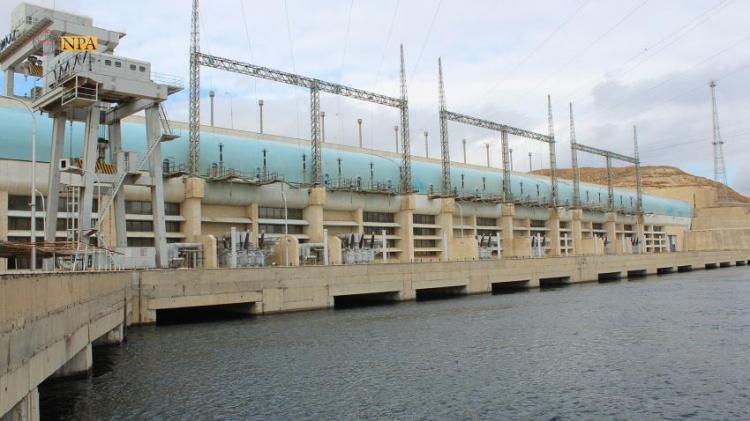Kobani – North-Press Agency
Fayad Mohammed – Fattah Issa
Rojava Dam (formerly Tishreen Dam), the second-largest dam in Syria in terms of size, amount of electricity it generates and the volume of water it stores, supplies electricity to the Autonomous Administration territories in north-eastern Syria.
However, the process of supplying electricity faces difficulties related to the breakdowns of high-tension lines due to the length of the lines on one hand, and the pressure on networks in winter season on the other. Rojava Dam is located on the Euphrates River in the eastern countryside of Manbij, east of Aleppo. The dam contains Tishreen Lake and a water reservoir with capacity reaching 9,1 billion cubic meters.
The main purpose of the construction of the dam was to generate electricity, which is 900 meters in length and a base width of 290 meters, with a width at the top of about 20 meters and a height of 40 meters. The lake is 155 square kilometers whose natural storage level is above the sea level +325m, while the hydropower plant is 270m long, 72m wide and 72m high.
Running the turbines as needed
The administrator of Rojava Dam Nizar Moro told North-Press that the Autonomous Administration in northeastern Syria continues to supervise the works of the dam in order to generate the electric power that supplies the areas of the Autonomous Administration in northeastern Syria.
He pointed out that there are six groups (turbines) in the dam, five of which are ready for operation, while the sixth is being repaired; it depends on the amount of water received and it is operated according to the need of networks and stations, where three to four turbines are operated to provide electricity to the areas of northeastern Syria. Mr. Moro added that the amount of water coming from Turkey has decreased during the past three days than the previous period, but is considered a good quantity at the present time, pointing out that the three dams in the areas of the Autonomous Administration (Rojava/Tishreen Dam, Euphrates Dam and al-Hurriya/Baath Dam) are linked together with one network to supply the Autonomous Administration areas 24 hour a day, noting that the rationing occurs in the transfer stations due to the pressure on electricity networks in winter season.
Causes of breakdowns
Nizar Moro stressed that the Autonomous Administration is working to secure spare parts for the dam, pointing out that most of the failures that occur in the high-tension lines 230 are due to the length of those lines and the pressure on the electricity networks, especially in winter. He added that the cities of Raqqa and Deir ez-Zor, in addition to the cities of al-Jazira region are supplied by high-tension lines of 230 kilo, while the cities of Manbij, Tabqa and the Euphrates region are supplied by tension-lines of 66 kilo.
Production capacity
The technician at Rojava Dam, Mustafa Abdel Rahman explained that each turbine produces 105 MWh, while all six turbines in the dam produce 630 MWh, where three to four turbines are operated for 24 hours a day. He pointed out that the partial maintenance is done continuously depending on the spare parts provided by the Autonomous Administration. Each turbine in Rojava (Tishreen) Dam needs 456 cubic meters of water per second to produce 105 MWh. The number of workers in the dam before the Syrian crisis 2011 reached 600 employees, while currently there are about 300 employees, including 30 engineers.
Automatic control
Abdul Rahman added that the technical and engineering staff, in addition to the Department of Electricity, Laboratory, Mechanics and the Civil Department supervise the works of the dam over 24 hours. He explained that the operating room is the one that controls all dam works, where all information and breakdowns are automatically reported to the room, which in turn informs the competent departments for maintenance. In addition to Rojava (Tishreen) Dam, the Euphrates Dam in Tabqa, west of Raqqa is the largest dam in Syria, and al-Hurriya (Baath) Dam west of Raqqa is the third largest, all of them are located in the SDF-controlled territories.
Tishreen Dam was built in the late eighties of the last century, and began to actually producing electric power in 1999. The design of the dam belongs to the Russian Hydro project Institute, where electrical and mechanical equipment were brought to the dam from the Chinese company “Sichuan” for Import and Export. The civil works of the project were carried out by the Syrian General Company for Water Projects, while the civil housing works and their annexes and the construction of the hydroelectric station were carried out by the Syrian General Company for Construction and Development.
The SDF expelled the Islamic State group (ISIS) militants from Tishreen Dam on December 26, 2015.

